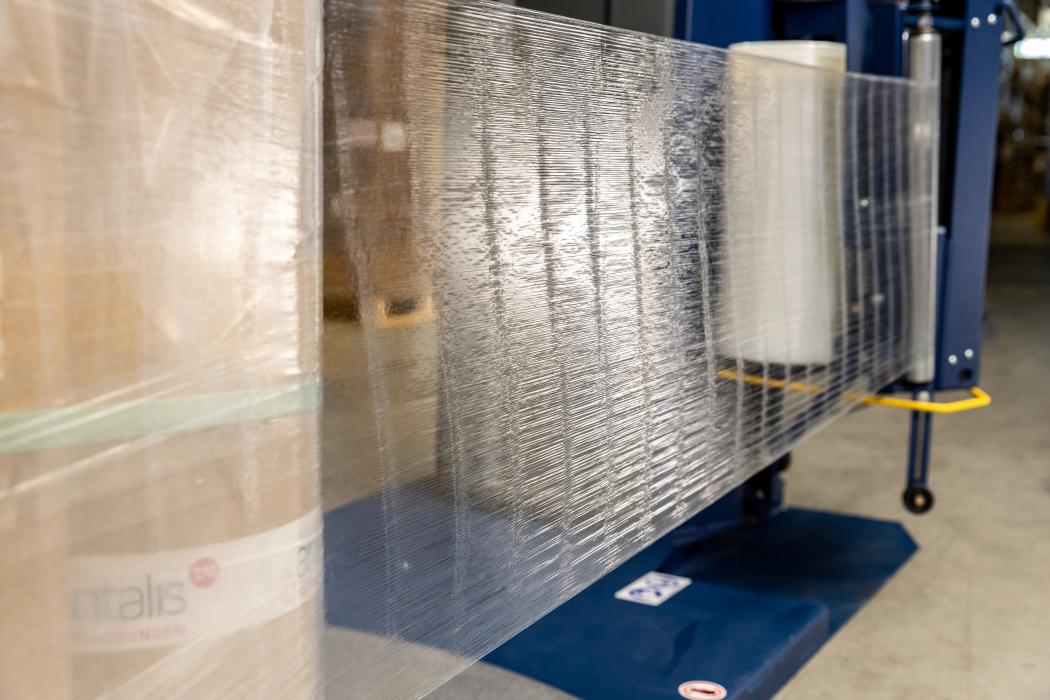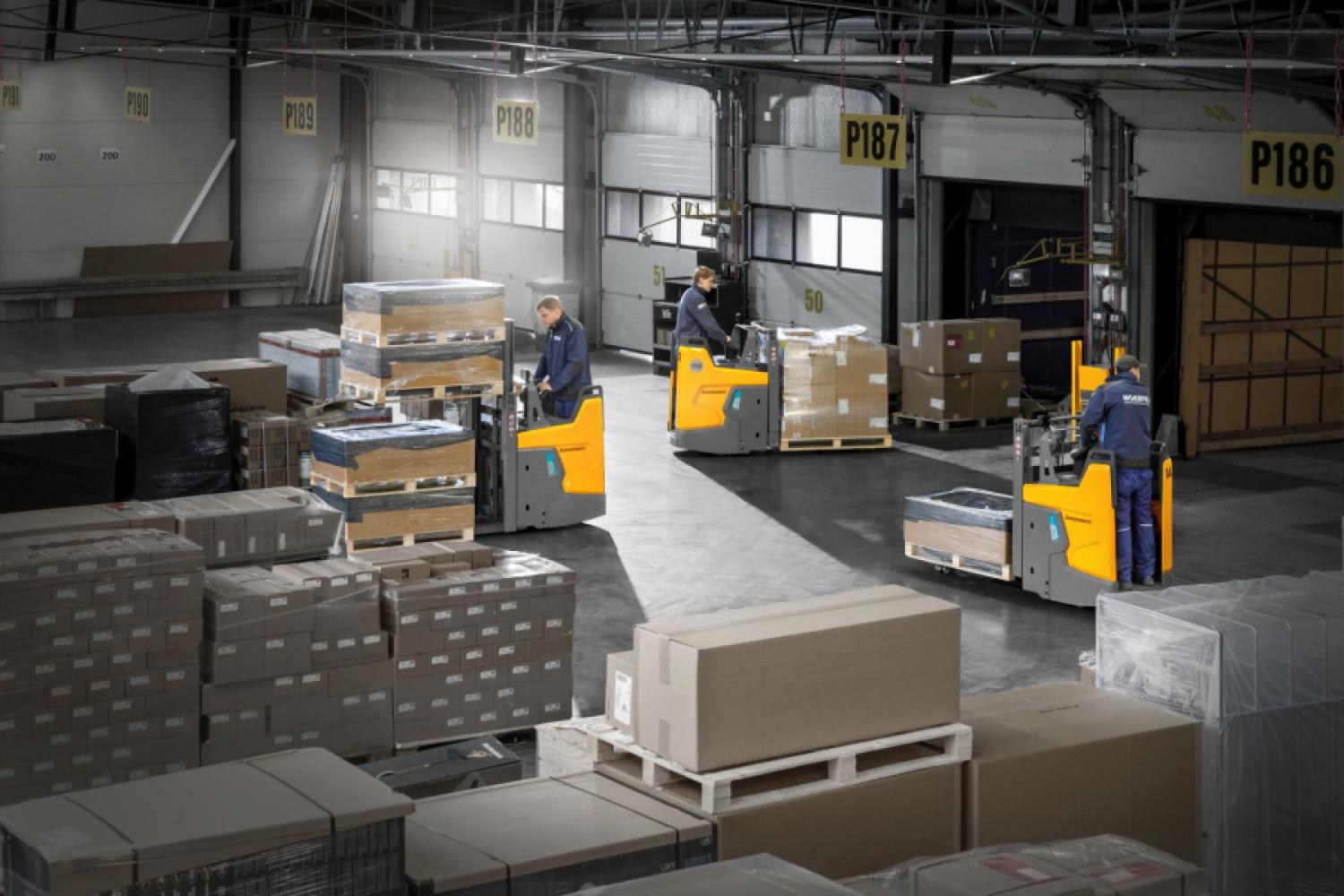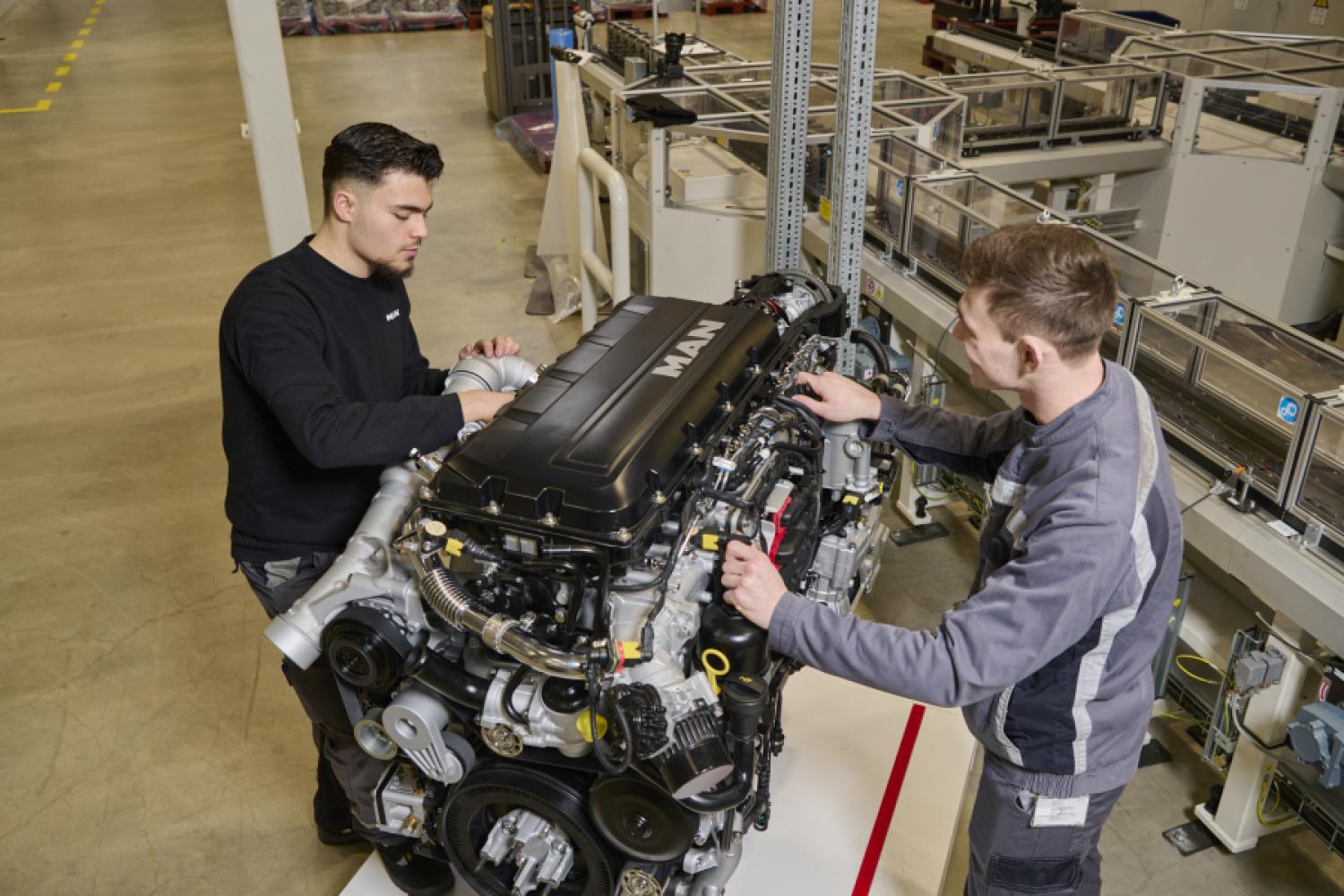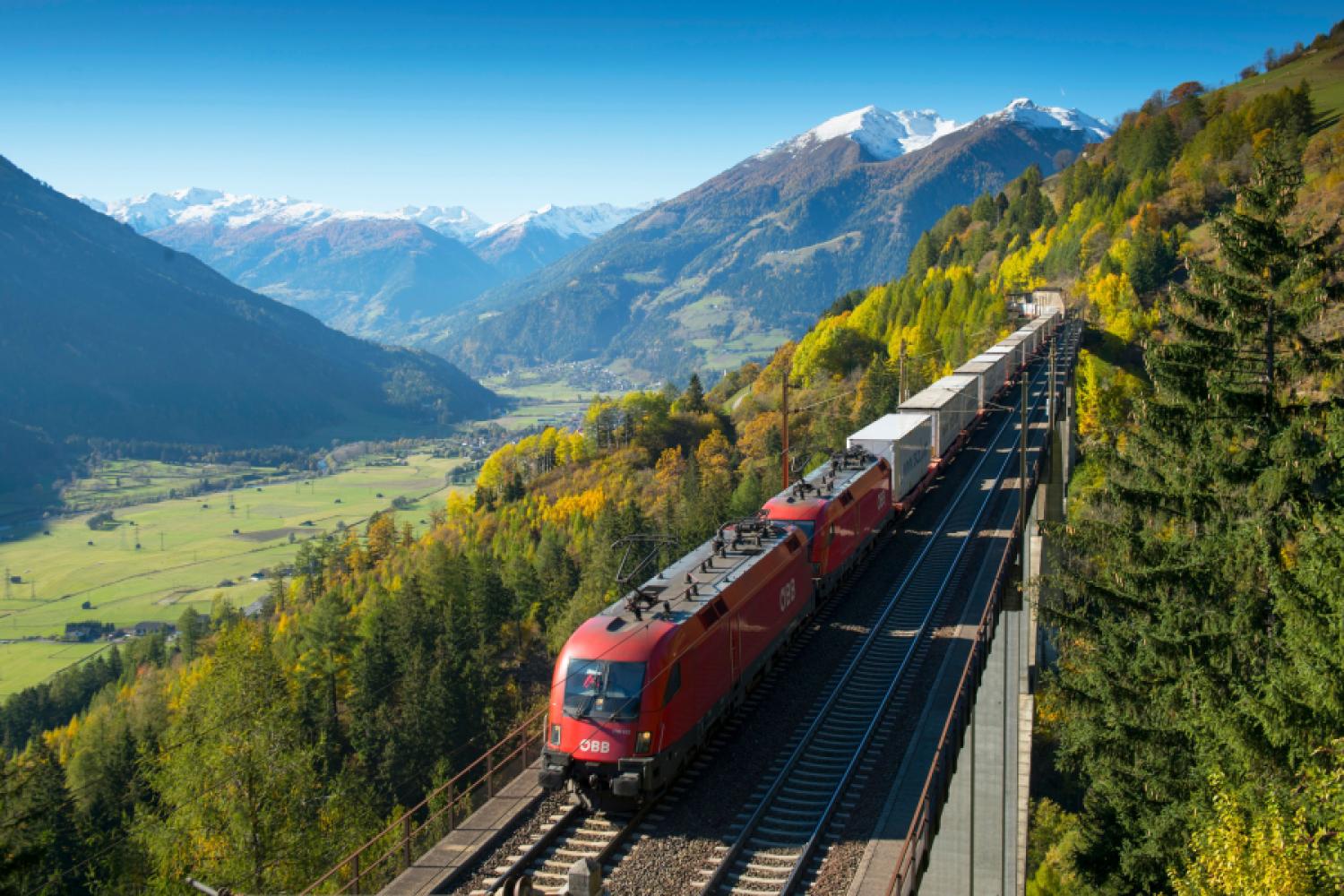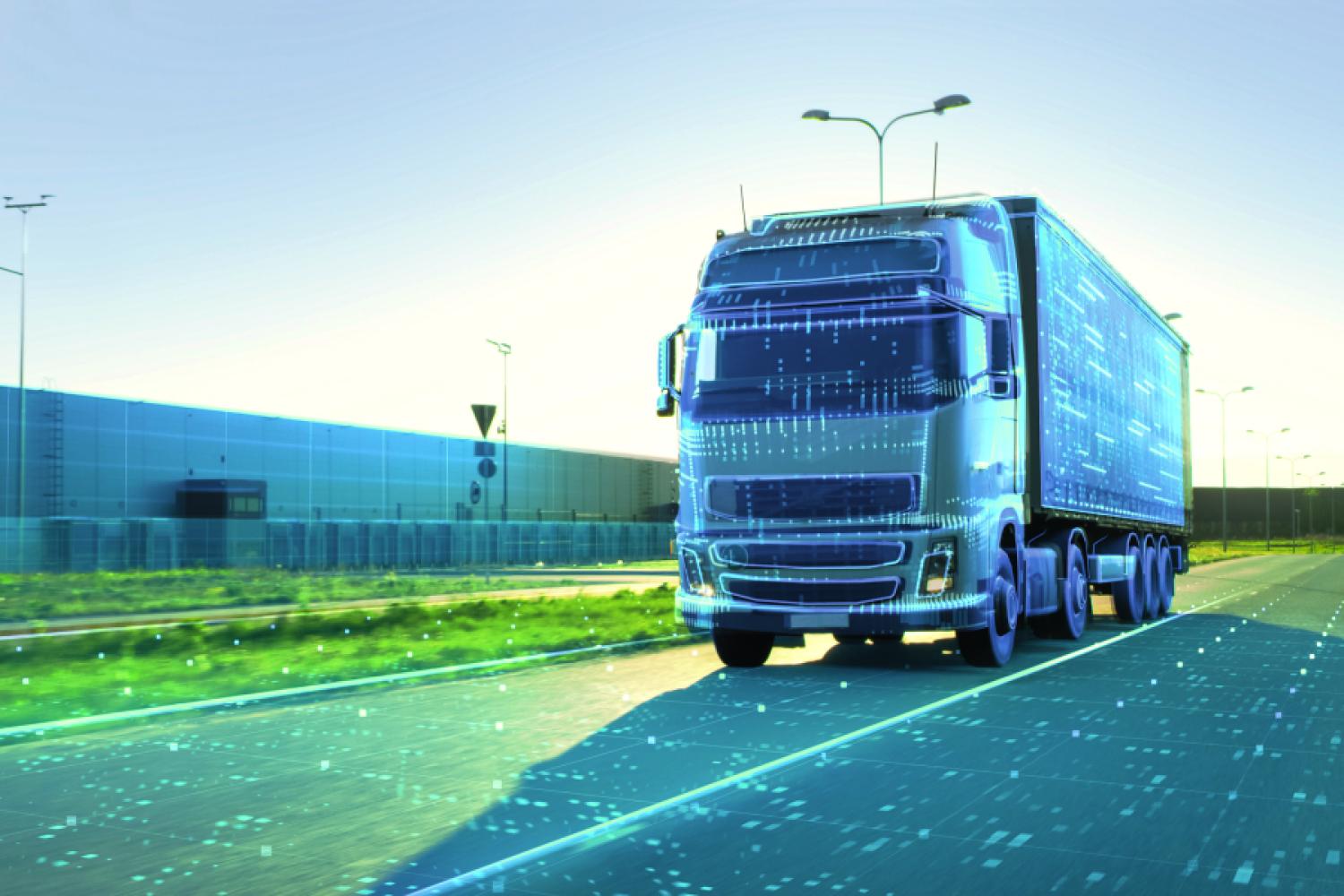When it comes to securing load units on Euro, industrial, or disposable pallets, there's hardly any alternative to stretching. Even irregularly shaped objects can be stabilized and protected from various adverse environmental influences with this proven method. How well this actually works in practice depends on the interplay of different factors: Are 8, 10, or 12µ film thickness sufficient, or should it be better 17, 20, or even thicker films? Should the stretching be done mechanically on-site, or is a pre-stretched quality required ex-factory? And what options do I have to reduce material consumption and make my load unit securing more sustainable?
The answer to these questions is provided by a so-called stretch analysis. The goal is to reduce film consumption while maintaining or improving the stability of the load unit.
The pallet is analyzed under real conditions and categorized according to its appearance into one of three categories: form-fitting (Type A), with under/overhang (Type B), or Type C, sometimes humorously referred to as "Tetris for adults." In this particularly challenging case, it is necessary to combine loose items and sometimes sensitive (display) packaging into a compact unit. The challenge is to choose the retaining forces so that they withstand the transport forces without the film tearing or the goods and their packaging being damaged.
Practical tests provide valuable insights
Important clues are provided by the so-called plate test, where, using a weight plate and spring balance, the holding forces of the film are measured in the longitudinal and transverse directions. The process is then repeated with a film of lesser thickness, often but with a better plastic formulation. If the holding forces remain the same or even improve, a lot of film
can be saved per wrapped pallet, which can be very quickly cost-effective given the corresponding throughput.
Savings of 30 percent or more are not uncommon. Practical tests are an indispensable procedure, as mere calculation cannot determine whether the film will run or not.
Wrapper and film must match
Special attention is needed for the interaction between stretch film and wrapping machine. A machine and a film must always be considered as a system. If only one of the two components has outstanding performance features, valuable potential in total is wasted.
The selection of the film is therefore primarily based on the key data of the wrapper: Is it a fully or semi-automatic machine? Does the building of the stretch use a core or roll brake, and does the machine offer variable setting options at the wrapper? Can the application tension be regulated separately?
Even though the basic rule is that packaging processes run even more efficiently when better or current machine technology is integrated, a new acquisition should initially be avoided as much as possible unless there are irreparable defects. The focus of optimization efforts is to achieve the most economical and best possible interaction between machine and film.
Be cautious when buying rolls: The net weight is decisive
In the actual analysis, experts also scrutinize the film core, i.e., the cardboard sleeve. Since films often have different sleeve weights, their weight is determined and then subtracted. For many customers, the comparison of the gross and net values is a real eye-opener.
Numerous companies assume that a higher roll weight also corresponds to more usable film material, which is not necessarily the case. Sometimes a higher proportion of cardboard core is used to
effectively disguise a lower film proportion with the same gross weight. Thus, the supposedly cheaper film turns out to be less productive overall.
Since a film roll containing more net film also requires less frequent roll changes, material savings are accompanied by lower handling costs. Calculated over the year, significant savings effects can be achieved.
Less waste and more efficiency with coreless stretch films
An even more consistent utilization of consumables with simultaneous waste reduction is offered by coreless machine stretch films. The films, now available as an alternative to many proven variants, come without the usual cardboard core, opening up further savings potentials.
Instead of the disposable roll core, this technology uses a reusable coreless roll adapter, which remains in the machine. Once adjusted to the used wrapper by a film expert, customers can use the coreless stretch films like ordinary rolls and benefit from even more available running meters per film pallet, reduced transport costs, as well as lower CO2 emissions during transport and disposal.
Sustainability as a driver: Why environmentally friendly films are becoming increasingly important
Generally, questions surrounding environmental effects and their avoidance are increasingly among the reasons why AVP packaging experts are called into a company. Stricter requirements in terms of sustainability and climate protection are now the subject of almost every consulting discussion. Interest in environmentally friendly solutions and materials is rising – whether due to an upcoming environmental audit or possible tax relief on the plastic tax, which will be introduced in more and more EU countries, including Germany.
So-called PCR films (Post-Consumer Recycled) are now in high demand, which are partly made from the recycled plastic of discarded materials. With constant technical properties, the proportion
of recyclate in such films is at least 30 percent, which can lead to a reduced tax or even total exemption from this duty.
A reduction in film thickness also positively impacts the ecological footprint. A new and ultra-thin film with 15 µm was introduced by AVP at a large shipping service provider in Austria. Annual CO2 emissions are reduced by 15.3 tons as a result.
Customized film solutions for a variety of requirements
Businesses should plan between one and one and a half hours for stretch optimization. A stretch analysis must not take longer, especially with fully automatic machines, as production halts during this time. However, if a customer is very familiar with the operation of their fully automatic machine, the decision-making process can often be significantly shortened.
In addition to the most requested standard or power qualities, AVP film specialists can also offer numerous special qualities. The range extends from special granulate mixtures, perforated films for use in cool areas, and additives for UV stability or antistatic properties to colored or printed variants.
Manufacturer-independent advice is important here. AVP is not dependent on the product portfolio of a single manufacturer when selecting, but can choose the best solution from the range of different providers.
The Author
Arno Werner has been with Antalis Verpackungen (AVP) for over 15 years and has extensive experience in industrial packaging solutions. After joining AVP in 2008, he initially worked in internal sales for the food sector. From 2013, his focus shifted to the film sector, which he has since intensively managed – with an interim station in the packaging machinery sector. Since 2021, Arno Werner has been fully specialized in the film area as a product
